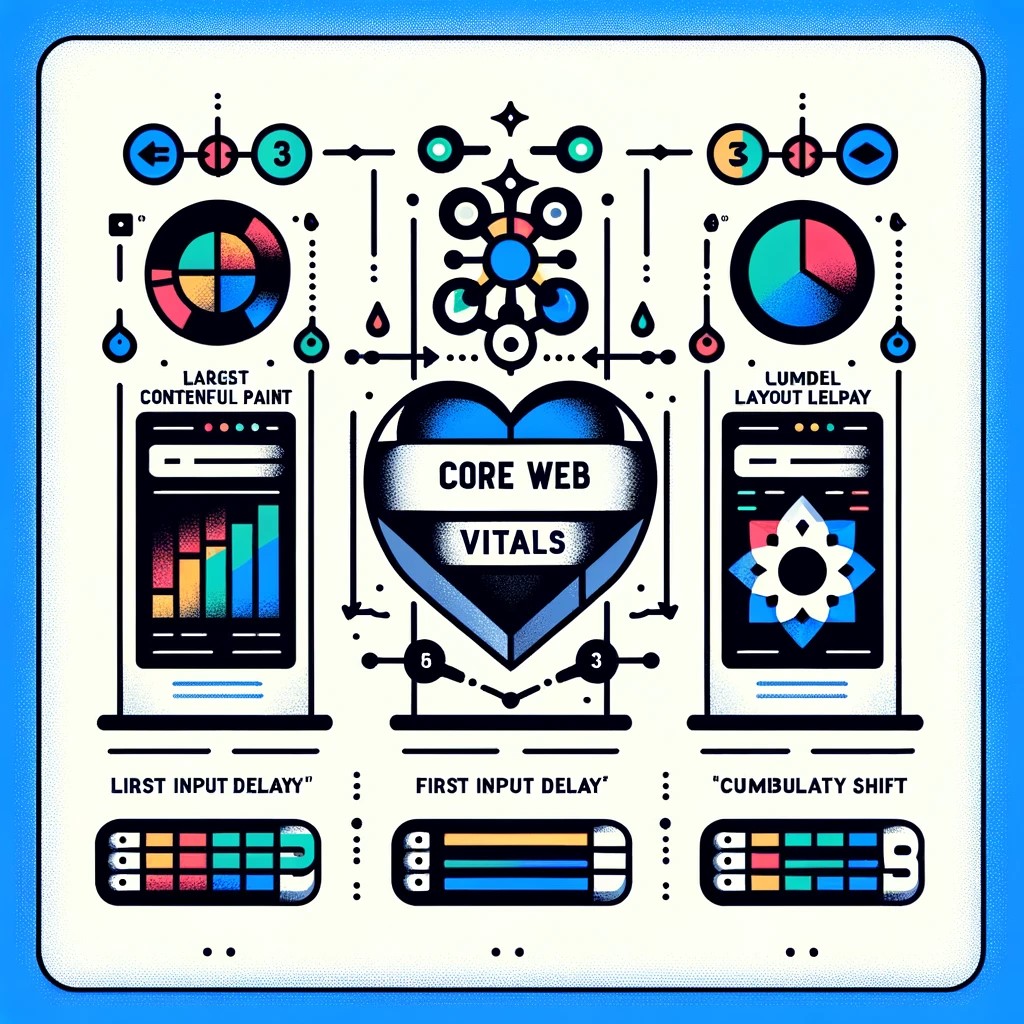
The digital marketing landscape is in constant flux with new algorithm updates, fresh tools like GA4, and the emerging presence of AI. At times, staying updated can feel like running a never-ending race. Over recent years, there has been heightened emphasis on enhancing user experience on websites.
One of the most transformative additions has been Google’s Core Web Vitals. These vitals influence how search engines appraise your site, potentially affecting your website rankings. So, what exactly are they and why are they so pivotal for SEO? Let’s delve in.
What are Core Web Vitals?
In recent times, Google has prioritised Core Web Vitals as a critical ranking factor. They now form a part of Google’s “page experience” metric, influencing a site’s position on the search engine results page (SERP). Fundamentally, they evaluate the user experience based on loading performance, interactivity, and the visual stability of a page. The three primary components are:
Largest Contentful Paint (LCP): This evaluates the loading performance of a page. An optimal LCP score indicates the page’s main content has loaded promptly, ensuring visitors aren’t left hanging. A common LCP issue might be the sluggish loading of resources, such as images.
First Input Delay (FID): This measures the interactivity and responsiveness of a page. It records the time from when a user first interacts with a page (like clicking a link) to when the browser processes that interaction. A typical FID issue is failing to prioritise essential resources, which can result in page loading delays.
Cumulative Layout Shift (CLS): CLS measures visual stability. It calculates the frequency of unexpected layout shifts, which often irk users. Common CLS issues arise from images, videos, or other media elements lacking specified dimensions, leading to shifts as they load.
Why are Core Web Vitals Important for SEO?
User experience has increasingly been central to Google’s algorithm updates. An enhanced user experience often leads to longer site visits, lower bounce rates, and increased engagement – all key factors impacting search rankings.
Furthermore, as user behaviour gravitates more towards mobile searches, these vitals become even more crucial. A subpar mobile experience can markedly tarnish a site’s SEO ranking.
Integrating Core Web Vitals with Broader Digital Strategies
While it’s essential to optimise for Core Web Vitals, they shouldn’t be the sole focus. In the realm of digital marketing, every strategy is interconnected, including PPC and social media.
For example, a meticulously optimised website can elevate organic search rankings, but complementing these endeavours with specific PPC campaigns can boost visibility and attract immediate traffic. In today’s interconnected era, an engaged presence on social media platforms can extend content reach, forging more avenues leading back to your site.
In the broader scheme of things, SEO, PPC, and social media shouldn’t operate in isolation. They ought to collaboratively mesh, sculpting a robust and integrated digital presence.
The advent of Google’s Core Web Vitals emphasises the significance of user experience in the current marketing scenario. As these vitals grow in their impact on search rankings, businesses need to pivot, optimising not just for content but performance as well.
As the digital landscape evolves, maintaining agility is paramount. Ensuring your website aligns with these new standards will not only curry favour with Google but, crucially, result in more satisfied and engaged visitors.